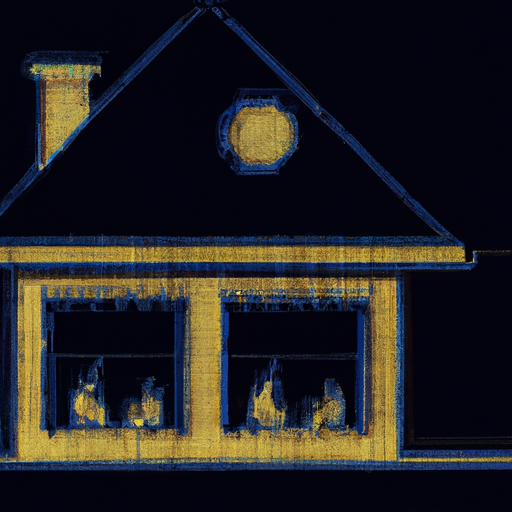You’re about to embark on a journey, learning all about Time-of-Use rates. If you’re curious about this energy pricing strategy and how it might impact your electricity bill, this article will be a beacon of light in a sometimes-confusing terrain. Ensuring that you’re well-informed is the goal here, and the following text strives to help you discern the most vital details and aspects of Time-of-Use rates. So, pull up a chair, settle in, and get ready to be enlightened on this compelling topic as we break it down into easily digestible bites. Let’s take this knowledge journey on Understanding Time-of-Use Rates together!

Understanding Time-of-Use Rates
Hello there! Let’s dive into the world of electricity rates, notably Time-of-Use Rates. Have you heard about them before? If you have, that’s excellent! But, if you haven’t, well, you’re in luck! We’re going to explore everything you need to know about Time-of-use Rates.
Definition of Time-of-Use Rates
Let’s start with the basics. Time-of-Use Rates, often shortened as TOU rates, are simply a pricing structure applied to energy rates. What makes this interesting is that the rates change depending on the time of the day. So, during certain parts of the day, you might be charged less for the electricity you consume, while at other times, you might have to pay more. Thus, the ‘time of use’ essentially influences the rate you pay for your energy.
Factors Influencing Time-of-Use Rates
Now, you might be asking, what factors influence these rates? Why do they change throughout the day? Well, the main driver here is supply and demand. That is to say, during periods when the demand for electricity is high, the rates also peak. Conversely, during periods of low demand, you enjoy lower rates. This demand often correlates with people’s daily routines and the general functioning of businesses and industries.
Features of Time-of-Use Rates
Time-of-Use Rates have some unique features that make them interesting, and at times, beneficial to consumers.
Flexibility of Time-of-Use Rates
One of the most notable features of TOU rates is their flexibility. Unlike flat-rate electricity pricing, time-of-use rates offer consumers the opportunity to adjust their usage behavior to take advantage of lower rates. For example, you could choose to run your dishwasher or do your laundry during off-peak hours when rates are lower.
Cost Variations in Time-of-Use Rates
Cost variations are another distinct feature of TOU rates. This is quite simply the fluctuating cost per kilowatt-hour depending on the time of day. Generally, there are three pricing periods: peak, off-peak, and shoulder (sometimes referred to as mid-peak). Peak is when electricity is most expensive, off-peak is the cheapest, and shoulder rates fall somewhere in the middle.
Time-of-Use Rates and Electricity Consumption
So how exactly do TOU rates affect your electricity consumption?
How Time-of-Use Rates Impact Electricity Consumption
By design, TOU rates encourage consumers to adjust their electricity consumption habits to align with periods of lower rates. Therefore, if you are on a TOU rate plan, you might find yourself planning your energy-intensive activities during off-peak hours, thus altering your overall electricity consumption patterns.
Beneficial Aspects of Time-of-Use Rates for Electricity Consumers
TOU rates can be quite beneficial to electricity consumers, especially those who have flexible schedules. These rates allow you to save on your energy bill by simply adjusting when you perform certain tasks. Moreover, by shifting your usage to off-peak periods, you are also contributing to reducing peak demand on the grid, which has broader environmental and infrastructural benefits.
Deciphering Your Electricity Bill
Have you ever looked at your electricity bill and wondered how exactly it’s calculated? Let’s shed some light on that.
Interpreting Time-of-Use Rates on your Bill
Your bill will typically breakdown your electricity usage according to the time-of-day tiers we discussed earlier – peak, off-peak, and shoulder periods. It will show you just how many kilowatt-hours you consumed in each of these periods, alongside the applicable rate for each.
Understanding Peak and Off-Peak Charges
Simply put, peak charges are higher rates that you contend with during periods of high demand, while off-peak charges refer to lower rates during periods of reduced demand. It’s important to understand these terms, as they directly influence your bill total. Don’t forget, by shifting your usage to more off-peak periods, you can save on your energy bill!

Efficacy of Time-of-Use Rates
So, are time-of-use rates effective in achieving their goals? Let’s see the experiences of those who have adopted these rates.
Success Stories of Time-of-Use Rates
There have been several success stories with TOU rates, with numerous households and businesses attesting to significant savings on their energy bills. In fact, some studies have shown that these rates actually help reduce overall energy demand, especially during peak periods. This is a win-win situation for consumers, energy providers, and the environment as a whole.
Challenges With Time-of-Use Rates
While TOU rates can be beneficial, they are not without challenges. One major concern is the potential burden on households that cannot shift their energy use to off-peak periods due to factors like work schedules or health requirements. Greater education and flexibility in rate plans can help address these issues.
Time-of-Use Rates: Impact on Renewable Energy
Ever wondered how TOU rates play into the shift towards renewable energy?
Pros and Cons of Time-of-Use Rates in Promoting Renewable Energy Use
On one hand, TOU rates can incentivize the use of renewable energy by creating a financial advantage for those who generate their power (like solar panel owners) during peak periods. On the other hand, fluctuations in renewable generation, such as solar energy dipping during cloudy days or wind energy being inconsistent, make it challenging to fully benefit from TOU rates.
Impact on Solar and Wind Energy Consumption
TOU rates can drive increased consumption of solar and wind energy, especially during daytime off-peak periods when renewables tend to be plentiful and cheap. This can further help decarbonize the energy sector.

Demand Response and Time-of-Use Rates
Time-of-Use Rates also play a crucial role in what’s known as Demand Response. Fancy term, isn’t it?
What Is Demand Response?
Demand response is simply a strategy employed by electricity companies to encourage consumers to alter their energy use in response to changes in electricity price or incentives. It’s all about managing demand to match supply.
Role of Time-of-Use Rates in Demand Response
Time-of-Use Rates are a key tool in driving demand response. They signal to consumers when electricity demand is high and when it’s low, thereby enabling consumers to adjust their usage and help balance the grid.
Ways to Optimize your Time-of-Use Rates
So, how can you make the most out of time-of-use rates?
Energy Efficiency Strategies
Here’s your first strategy – energy efficiency! Think about ways to use less power during peak hours. This could mean using energy-efficient appliances or simply maintaining your current ones to ensure they’re running optimally.
Smart Appliances and Time-of-Use Rates
Another strategy is leveraging smart appliances. These devices can be programmed to run during off-peak periods, resulting in cost savings. You could consider smart thermostats, smart laundry machines, and even smart dishwashers!
Future of Time-of-Use Rates
So, what does the future hold for TOU rates?
Potential Changes in Time-of-Use Rates
With the rapid advancement in technology and the growing shift towards renewable energy, it’s possible that we’ll see more dynamic TOU rates in the future – perhaps rates that change every hour or even every minute!
Innovations in Peak Demand Management
Future innovations in peak demand management, such as advanced energy storage solutions and real-time energy usage feedback, will greatly complement TOU rates and drive even greater efficiency and savings.
Advice for Consumers Regarding Time-of-Use Rates
Lastly, a little friendly advice for navigating this world of TOU rates.
How to Choose the Best Time-of-Use Rate Plan
Finding the best TOU rate plan depends on your lifestyle and energy needs. Consider the times when you use the most electricity and see if it aligns with off-peak periods. If it does, a TOU plan might be just the ticket for you, but if not, a standard plan may be more beneficial.
Strategies for Managing Time-of-Use Rates
Managing your TOU rates can be done by monitoring your energy usage and adjusting accordingly. Leverage technology like smart meters and home energy monitors to track your consumption patterns. Remember, knowledge is power (pun intended)!
Well, there you have it, folks. A deep dive into Time-of-Use Rates. Whether you’re already on a TOU rate plan or considering one, hopefully, this guide gives you a clearer understanding of what you’re signing up for. Happy energy-saving!
